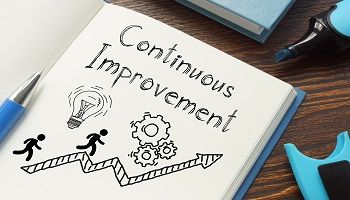Arguing to Learn and to Win
The recent INC. article, Stuck in a Heated Argument? Follow the ‘ATL Rule’ to Ensure Everyone Wins[1] set me to thinking about how best to approach the way we manage major conflicts and minor disagreements, how we argue.
In my book, Managing Conflict in Projects: Applying Mindfulness and Analysis for Optimal Results[2] the message is to approach managing differences with clarity, while accepting the reality that there may be emotions involved, not being driven by them. This is emotional intelligence, the ability to be aware of and manage emotions. It is a foundation for healthy relationships, and healthy relationships include the ability to manage disagreements, whether they are small arguments or major conflicts.
The word conflict needs definition. The general definition from Merriam-Webster is “an extended struggle : fight, battle. : a clashing or sharp disagreement (as between ideas, interests, or purposes) : mental struggle resulting from needs, drives, wishes, or demands that are in opposition or are not compatible. conflict.” From Cambridge dictionary, an active disagreement between people with opposing opinions or principles: There was a lot of conflict between him and his father. It was an unpopular policy and caused a number of conflicts within the party. His outspoken views would frequently bring him into conflict with the president.”
Here, the term conflict covers any kind of disagreement or struggle that starts off with opposing views. Managing conflict seeks to resolve the conflict.
The conflicts that make the news are beyond the scope of this article, though the same basic principles apply. Here the focus is on the kinds of conflicts that come up in organizations, projects and processes. The principles are:
- Step back to see the big picture and how your emotions, beliefs, biases, and mental models affect your perspective.
- Seek to understand your mindset, goals, needs, and wants and what influences them
- Seek to understand the other parties’ goals, needs, and wants and what influences them
- Be mindful of your words, behavior, and feelings, and their impact
- Assess the degree to which you can trust and collaborate with the others
- Promote a win-win attitude in which the parties jointly resolve the conflict
- Recognize that there are some disagreements that cannot be settled with a win for both parties
- Compile facts and opinions and examine and use them in decision making to resolve the conflict.
Arguing to Learn and to Win
The INC. article points out that scientific study shows we should “enter debates looking to learn rather than win.” Since it is very difficult for many people to give up winning, I think the right mindset for working on a disagreement is looking to learn and looking to win.
That opens the question of what it means to win. Does it mean getting your way? Or does it mean coming to the optimal solution to the problem at hand? For example, two designers in conflict about which design should be used in a project can collaborate to identify the objectively best design or they can battle one another to get their design accepted.
Researchers identify two primary mindsets that set a stage for the way arguments are addressed: arguing-to-learn (ATL) and arguing-to-win (ATW). In the ATL approach the parties cooperate to get a better understanding of the situation. It implies open mindedness to discover the resolution through research, dialog, and analysis.
In the ATW approach the tendency to believe in a single truth and to cut off or ignore debate in which conflicting opinions and facts are raised. Instead of discovering a resolution the ATW mindset often begins with the resolution, takes it as truth and argues for it with a closed mind.
Understanding the different mindsets and the benefit of using an ATL, the challenge is to work towards making an ATL mindset part of your conflict management process.
Advertisement
[widget id=”custom_html-68″]
A Hybrid Approach
As with all complex social issues, there is no one right answer. Let’s not over-simplify and think that it’s either ATL or ATW. We can also argue to learn and win (ATLAW).
In projects meaningful arguments are about whether, why, how, who, and when things will be done. If the argument is not settled the project may be delayed or motivation and morale will be impacted. If the argument is not settled well, the outcome will be subpar.
Of course, there are other arguments about politics, religion, freedom vs. authoritarianism, the causes of global warming, etc. For these important issues, there may never be a resolution. But when it comes to deciding on a design to use, or a budget or schedule, there must be a winner.
We can take the position that the winner is not the person with the idea, it is the idea that wins. And if the best idea wins, then the people involved win, where winning means that their needs have been met. If the parties take an ATL approach they creatively discover a resolution that may blend elements of alternative solutions or pick one over another. The discovery results from the learning process. Then there is the perception of winning or losing
Buy-in
If everyone agrees as to what it means to win, and recognizes that learning improves the probability of winning, then the players will naturally take a collaborative approach facing the issue rather than facing one another.
But ego and closed mindedness get in the way. The emotional need to win, psychological tendencies to dominate and win, and not knowing of an alternative to win-lose confrontation make collaboration difficult, if not impossible. Getting past that barrier requires process awareness, self-reflection, coaching and training.
Look at your process.
- Are the principles stated above realistic?
- Do they naturally occur as part of a healthy flow that allows for differences and promotes win-win resolutions? If they do, be grateful and carry on.
- If not, how can you subtly or overtly discuss the conflict management process to promote open-mindedness and rational thinking?





